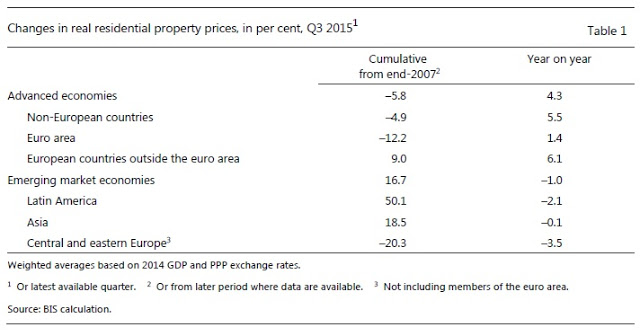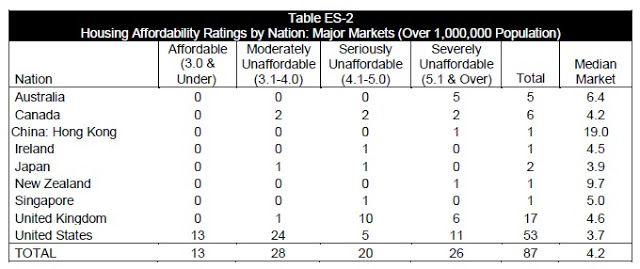Wednesday, February 24, 2016
Experts Weigh in on the State of the Global Housing Market
“Global house price boom accelerates further, led by Europe, North America, and some parts of Asia Pacific”, according to the Q3 2015 quarterly note from the Global Property Guide. This house price boom is reflected in two measures. First, real house prices rose in 28 out of a sample of 41 countries. Second, there is stronger upward momentum—in 22 countries house prices have risen faster compared to the previous quarter. These results are also in line with the Q3 2015 data reported by Knight Frank. Of the 55 housing markets tracked by Knight Frank, 82 percent recorded positive annual price growth, up from 75 percent. However, FITCH notes that even though the housing and mortgage outlook for the 22 countries remain stable/positive, divergence is increasing.
Looking at global house price developments in more detail, the Bank for International Settlement (BIS) says that real house prices increased by 4.3 percent year-on-year in advanced economies vs. a decline of 1.0 percent in emerging market economies. Within emerging market economies, the BIS notes that “there were significant disparities across countries: while prices continued to rise strongly in Hong Kong SAR, India and Turkey, they kept falling in Brazil, China and Russia.” Going forward, “the EM house price boom will be curbed by slowing income growth and weaker economic prospects”, says Oxford Analytica.
In the Euro area—where house price data coverage is higher compared to other regions—house prices rose by 2.3 percent in the third quarter of 2015 compared with the same quarter of the previous year, according to Eurostat. On the outlook for Europe, FITCH says that “Rising GDP, low rates, recovering credit flows, and improving labour markets will support the bounce-back in the eurozone periphery.” Moreover, according to Urban Land Institute’s Emerging Trends Europe, the five leading cities for investment prospects in 2016 are Berlin at Number 1, followed by Hamburg, Dublin, Madrid and Copenhagen.
Finally, the latest survey from Demographia International Housing Affordability Survey finds that “The most affordable major metropolitan markets in 2015 were in the United States, which had a moderately unaffordable rating of 3.7, followed by Japan, with a Median Multiple of 3.9. Major metropolitan markets were rated “seriously unaffordable,” in Canada (4.2), Ireland (4.5), the United Kingdom (4.6) and Singapore (5.0). The major markets of Australia (6.4), New Zealand (9.7) and Hong Kong (19.0) were severely unaffordable.”
From the Global Housing Watch Newsletter: February 2016
“Global house price boom accelerates further, led by Europe, North America, and some parts of Asia Pacific”, according to the Q3 2015 quarterly note from the Global Property Guide. This house price boom is reflected in two measures. First, real house prices rose in 28 out of a sample of 41 countries. Second, there is stronger upward momentum—in 22 countries house prices have risen faster compared to the previous quarter.
Posted by at 10:00 AM
Labels: Global Housing Watch
Tuesday, February 23, 2016
Financial Development, Inequality and Poverty: Some International Evidence
A new IMF paper by Sami Ben Naceur and RuiXin Zhang “(…) provides evidence on the link between financial development and income distribution. Several dimensions of financial development are considered: financial access, efficiency, stability, and liberalization. Each aspect is represented by two indicators: one related to financial institutions, and the other to financial markets. Using a sample of 143 countries from 1961 to 2011, the paper finds that four of the five dimensions of financial development can significantly reduce income inequality and poverty, Read the full article…
Posted by at 3:51 PM
Labels: Inclusive Growth
Friday, February 19, 2016
The IMF’s Interest in Inclusive Growth: Promising or PR?
My presentation today at CIGI tries to provide a framework for the IMF’s various recent policy forays and some of the key changes in IMF advice.
Posted by at 9:25 PM
Labels: Inclusive Growth
Thursday, February 18, 2016
House Prices in Austria
“House price growth was strong over recent years but has moderated recently”, says IMF’s report on Austria.
Posted by at 4:05 PM
Labels: Global Housing Watch
Subscribe to: Posts






